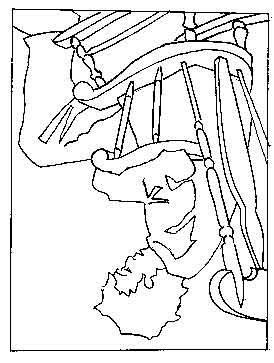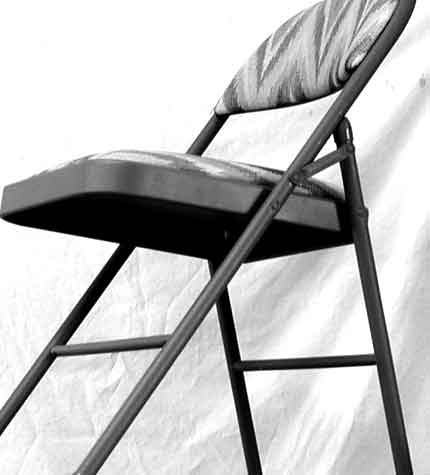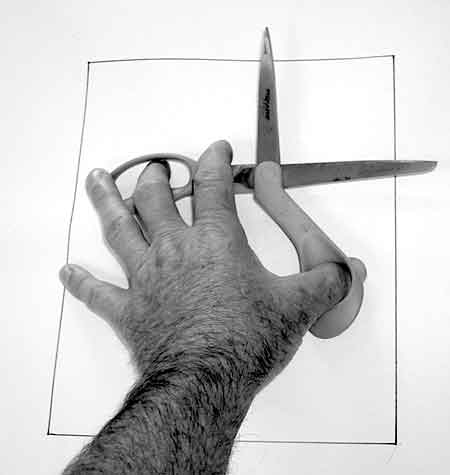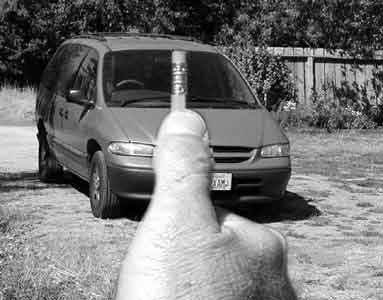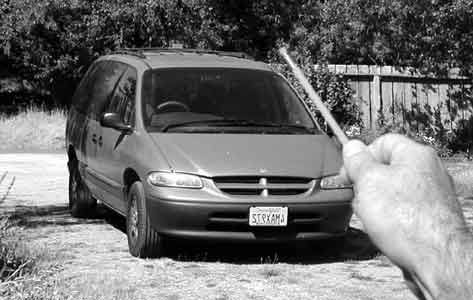Depicting Edges — Contour Drawing
Your eye follows the edge at the same speed your hand draws it. In pure contour drawing, you keep your eyes on the subject, not your drawing, and don’t lift the pencil from the paper, drawing the subject in one continuous line. In modified contour drawing your eyes shifts back and forth from the subject to your drawing, and you can lift your pencil from the paper.
Exercise: Copy this drawing upside down, looking back and forth from the original to your copy. Take your time, slow down and maintain an even, relaxed pace. Let your eye follow one line at a time while your hand draws it.
Mirror image contour: Complete this shape’s mirror image on the right:
Defining Spaces – contour drawing of negative shapes
Your eye traces and your hand draws the shape of the spaces around objects, not the objects themselves.
Exercises: Draw the outline of the chair below by contour drawing the negative shapes that the chair makes within the rectangle.
Exercise: draw your hand holding a pair of scissors or other object, with your hand lying on a rectangle drawn on a piece of paper. Reproduce the negative shapes created between your hand and the sides of the rectangle.
Reproducing Relationships – sighting, scaling and judging angles
Hold a pencil in your hand, arm straight and elbow locked. Pick one shape in your subject and use your thumb to measure it’s size. Call this unit of measure “one,” and use it to judge the relative sizes of all the other shapes. For example, the height of the windshield is “one,” the grill is one windshield wide, the driver side headlight is half a windshield wide, the front tires are about 3/4 of a windshield tall, and so on. Also use the pencil to measure angles and transfer them from your subject to your drawing.
Exercise: Draw a guitar, car, or other complex shape by sighting and scaling the parts
Distinguishing Values — modeling light & shadow
Exercise: Use a pencil or graphite stick to model the values in your hand or sighting and scaling drawing. Let the white of the paper represent the lightest value and carefully reproduce each value you see.
Suggested reading: These exercises are adapted from The New Drawing on the Right Side of the Brain, by Betty Edwards. She applies psychologist Roger Sperry’s brain hemisphere research to drawing. Good drawing happens when the linear, rational left brain relinquishes control and allows the spatial, intuitive left brain to take over and direct the hand. Most of her exercises are designed to bore, distract, or otherwise trick the left brain into giving over control to the right.

